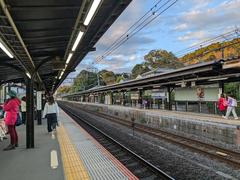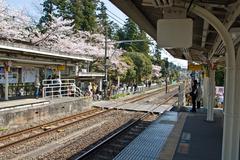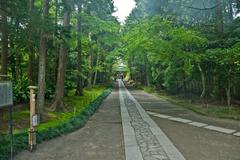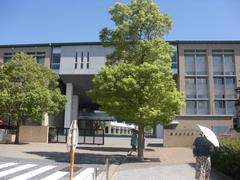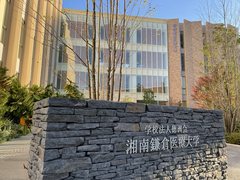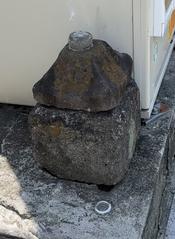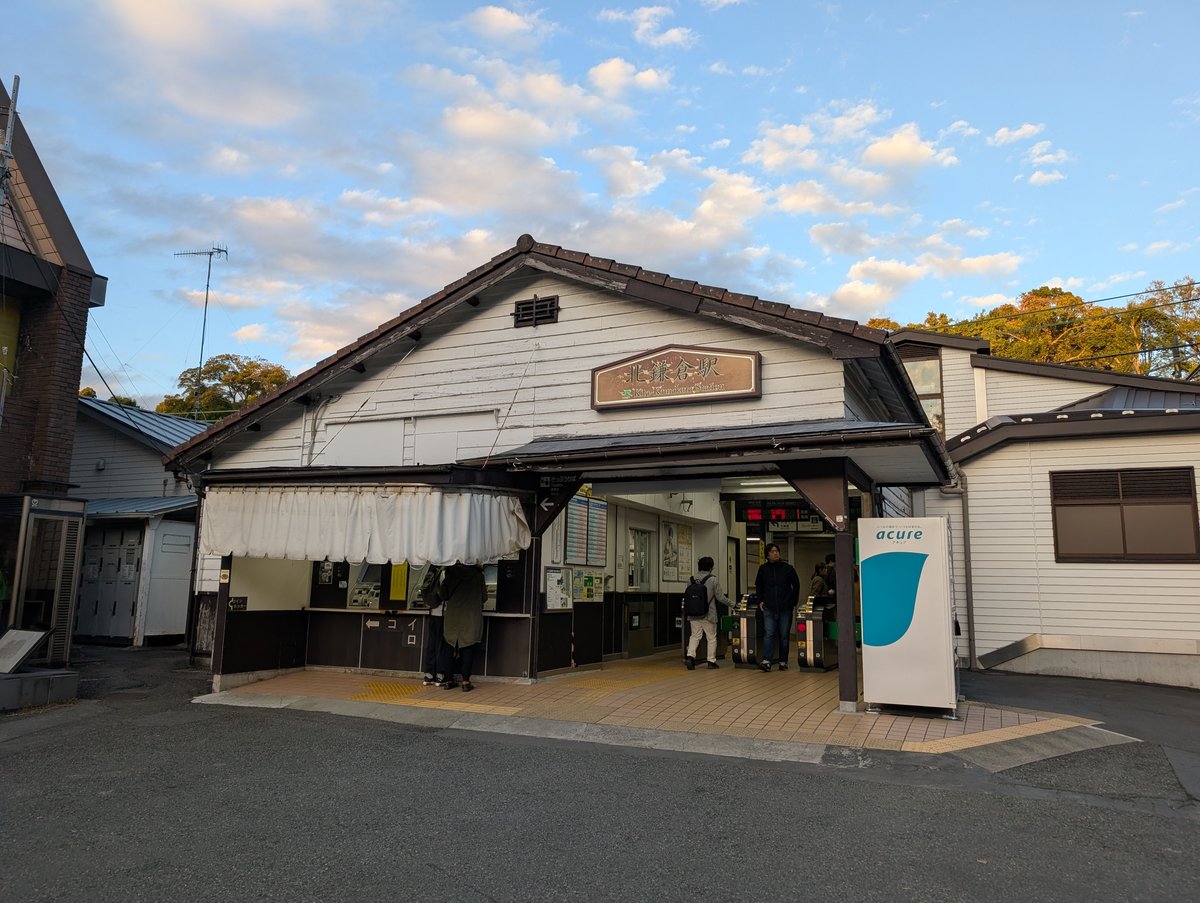
Kita-Kamakura Station: Visiting Hours, Tickets, and Kamakura Historical Sites Guide
Date: 14/06/2025
Introduction
Kita-Kamakura Station, located in northern Kamakura, Kanagawa Prefecture, is not only a convenient transit point but also a gateway to one of Japan’s richest cultural and spiritual landscapes. Opened in 1927, the station’s understated wooden architecture blends seamlessly with the surrounding natural beauty and the historic temples that lie just steps away. Whether you are a history enthusiast, a spiritual seeker, or a day-tripper from Tokyo, Kita-Kamakura offers a tranquil entry point to explore Kamakura’s iconic Zen temples, seasonal gardens, and scenic hiking trails (tokyo-tokyo.com; Wikipedia).
This guide provides detailed and up-to-date information on visiting hours, ticketing, transportation, accessibility, and highlights of the must-see temples and attractions in the area. You’ll also find travel tips, etiquette guidelines, and answers to frequently asked questions to ensure a smooth and meaningful visit.
Table of Contents
- Introduction
- Historical Overview and Cultural Significance
- Access, Transportation, and Station Facilities
- Visiting Hours and Ticket Information
- Key Kamakura Temples and Historical Sites
- Hiking Trails and Nature Walks
- Practical Tips and Accessibility
- Seasonal Highlights and Local Events
- FAQs
- References
Historical Overview and Cultural Significance
Kita-Kamakura Station was established as part of the JR Yokosuka Line expansion, cementing Kamakura’s status as a major destination for cultural and spiritual exploration. The Kamakura period (1185–1333) saw the rise of the samurai class and the spread of Zen Buddhism, which left a profound mark on the area’s temples and landscape (Japan Experience). The station’s proximity to the Kamakura Gozan (Five Great Zen Temples) underscores its role as a pilgrimage starting point and a bridge between Japan’s past and present (japan.travel; living.rise-corp.tokyo).
Access, Transportation, and Station Facilities
Getting to Kita-Kamakura
- From Tokyo: Direct JR Yokosuka Line or Shonan-Shinjuku Line trains take about 55–60 minutes from Tokyo Station (MATCHA; JRailPass).
- From Yokohama: About 25–30 minutes on the same line.
- From Kamakura Station: One stop north, or a scenic 20–25 minute walk.
Ticketing
- IC Cards: Suica, PASMO, and other major IC cards accepted.
- JR Pass: Valid for travel to Kita-Kamakura.
- Ticket Machines: Multilingual, with staffed windows during busy periods.
Station Facilities
- Platforms: Two side platforms; traditional wooden station building.
- Accessibility: Limited due to steps and age of the station. Wheelchair users may need assistance.
- Restrooms: Available.
- Lockers: Limited; consider using Kamakura Station for large luggage.
- Wi-Fi: Not reliably available—arrange mobile data in advance.
Visiting Hours and Ticket Information
Kita-Kamakura Station
- Operating Hours: ~5:00 AM to midnight, matching train schedules.
Major Temples
| Temple | Visiting Hours | Admission Fee | Notable Features |
|---|---|---|---|
| Engaku-ji | 8:00 AM – 4:30 PM | 500 yen | National Treasure Shariden, Great Bell, Zen gardens |
| Kenchō-ji | 8:30 AM – 4:30 PM | 500 yen | Oldest Zen monastery, gardens, panoramic views |
| Meigetsu-in | 9:00 AM – 4:30 PM | 500 yen | Hydrangea garden, round window, dry landscape |
| Jochi-ji | 9:00 AM – 4:30 PM | 200 yen | Bamboo groves, Kanro well, Buddha statues |
| Tokei-ji | 8:30 AM – 4:30 PM | 200 yen | “Divorce Temple,” iris garden, bamboo grove |
Admission fees and hours may change for special events or seasons—please check official websites for the latest updates.
Key Kamakura Temples and Historical Sites
Engaku-ji Temple
Immediately outside the station, Engaku-ji is the second of the Kamakura Gozan. Founded in 1282, it features tranquil gardens, the Shariden hall, and the Ogane (Great Bell) (Japan Experience). Zazen meditation sessions are sometimes open to the public.
Kenchō-ji Temple
Japan’s oldest Zen training monastery, established in 1253. The grounds include historic gates, meditation halls, and paths leading to panoramic outlooks (Japan Experience).
Meigetsu-in Temple
Known as the “Hydrangea Temple” for its spectacular blooms in June, it also features the famous round window (Satori no Mado) and a dry landscape garden (Matcha).
Jochi-ji Temple
A peaceful Zen temple with a unique two-story gate, lush bamboo stands, and the celebrated Kanro well (living.rise-corp.tokyo).
Tokei-ji Temple
A historic sanctuary for women seeking refuge, renowned for its iris garden and tranquil bamboo grove.
Other Sites
- Enno-ji Temple: Features important statues by Unkei.
- Komachi-dori: Shopping street with local snacks and crafts.
- Tsurugaoka Hachimangu Shrine: Kamakura’s primary Shinto shrine.
Hiking Trails and Nature Walks
- Daibutsu Hiking Trail: Connects Kita-Kamakura with the Great Buddha via woodland paths (Japan Manifest).
- Tenen Hiking Course: Leads from Kenchō-ji to Zuisen-ji, offering forest scenery and city views.
Practical Tips and Accessibility
- Footwear: Wear comfortable shoes for hilly, sometimes uneven temple grounds.
- Luggage: Lockers at Kita-Kamakura are limited; use Kamakura Station for larger bags.
- Payment: Cash is required for temple admissions; credit cards are accepted at some larger shops.
- Accessibility: The traditional layout and terrain mean limited barrier-free access. Assistance is recommended for those with mobility challenges.
- Language: English signage is common at major sites; smaller establishments may have limited English support.
Seasonal Highlights and Local Events
- Spring: Cherry blossoms at temple gardens.
- Early Summer: Hydrangea season, especially at Meigetsu-in.
- Autumn: Vibrant maple foliage.
- Festivals: Kamakura Matsuri in April, featuring parades and traditional archery (Japan Experience). Bamboo Day at Jochi-ji features art installations.
FAQs
Q: What are the station and temple visiting hours?
A: Kita-Kamakura Station operates from about 5:00 AM to midnight. Temples usually open from 8:00–9:00 AM and close by 4:30–5:00 PM.
Q: How do I buy temple tickets?
A: Tickets are sold on-site at temple entrances. Cash is the preferred payment.
Q: Is the station wheelchair accessible?
A: Accessibility is limited; assistance is recommended.
Q: What is the best season to visit?
A: Spring (cherry blossoms), early summer (hydrangeas), and autumn (fall colors) are especially scenic.
Q: Are there luggage storage options?
A: Very limited at Kita-Kamakura; use Kamakura Station or a luggage forwarding service.
References
- Kita-Kamakura Station Guide: Visiting Hours, Tickets & Nearby Historical Sites
- Kita-Kamakura Station - Wikipedia
- Visiting Kita-Kamakura Station: Exploring Kamakura’s Historic Temples, Tickets, and Hours
- Kita-Kamakura Visiting Hours, Tickets, and Guide to Kamakura Historical Sites
- Kita-Kamakura Historical Sites: Visiting Hours, Tickets & Top Monuments to Explore
- Kamakura Cultural Itinerary
- Kamakura Sightseeing: What to See and Do
- Hydrangea Season in Kamakura
- Kamakura Attractions – Live Japan
- Kamakura Overview – Japan Manifest
Plan Your Visit
For a seamless and enriching experience, download the Audiala app for audio guides, interactive maps, and up-to-date event information. Follow us on social media for the latest travel tips and share your Kita-Kamakura journey with fellow explorers.

